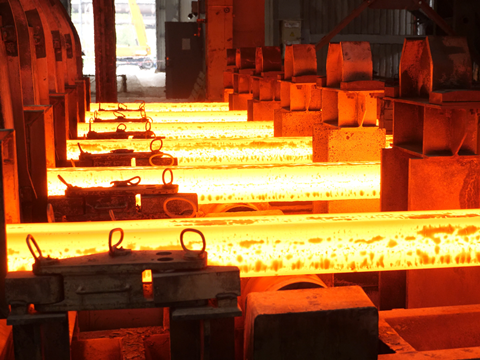
A new report by Leadit (Leadership Group for Industry Transition), based on an analysis of announced green steel projects which would account for 1/3 of current EU steel production, states that green steel could need 19% of the total EU policy target for domestic renewable hydrogen production.
The report shows that the 19% of the total EU policy target for domestic renewable hydrogen production needed for green steel is equal to 1.7 million tonnes per annum (MPTA) by 2030, increasing to 1.9 MPTA by 2045. Leadit adds that renewable electricity demand for green iron and steel projects is likely to reach up to 135 terawatt hours per year and warns that a lack of transparency in company plans means the true figures could be higher.
Apparently, the recycling of scrap combined with imports of hot briquetted iron would “significantly reduce” the demand for both renewable hydrogen and renewable electricity, but would also involve trade-offs, such as reduced self-sufficiency and impact on jobs.
Leadit says if the transition from fossil fuel-based to renewable electricity-based iron and steel production is to succeed, there is a need for reliable estimates of the increase in renewable electricity demand the transition will require. These estimates are also needed to align the steel sector transition with developments in the energy sector and other industrial sectors.
The report says the demand for renewable electricity and green hydrogen in the steel sector is one of several competing demands in the drive to achieve the green transition. The analysis is said to assess the potential demand for both renewable hydrogen and renewable electricity from announced green steel projects within the EU, based on data from LeadIT’s Green Steel Tracker. This demand is then compared with the electricity production aspirations of the EU Renewable Energy Directive and with the renewable hydrogen targets under the REPowerEU plan.
Leadit states there are significant differences in energy needs in the different scenarios studied in the report, with a variety of implications for energy security and materials security. The group emphasizes the importance of transparent planning by the EU, its member states, and steel producers to ensure electricity demand across sectors is balanced and decarbonization is achieved.
Per Andersson, head of secretariat for the Leadership Group for Industry Transition, said: “The share of green steel project announcements in the EU speaks to the region’s leadership in the transition of the iron and steel industries. Most of these projects are planned to be online by 2030 – just five years away from today. Evaluating and planning the renewable electricity demand for the iron and steel sector with all stakeholders is essential to minimize delays.”
In June, Steel for Packaging Europe confirmed a new record recycling rate of 80.5% for steel packaging, following the harmonized method for calculating packaging recycling rates within the EU. The announcement also represents a 2% increase on the 2021 recycling rate.
A few months later we asked thyssenkrupp - a finalist in this year’s Sustainability Awards - about its CO2-reduced tinplate, aiming to reduce emissions in the packaging steel process and nominated in the Commercialized Climate category. The company’s tinplate made of bluemint Steel has a manufacturing process said to reduce CO2 emissions by up to 69% compared to conventional tinplate.
If you liked this story, you might also enjoy:
The ultimate guide to the Packaging and Packaging Waste Regulation in 2024
How are the top brands progressing on packaging sustainability?
Sustainable Innovation Report 2024: Current trends and future priorities
Everything you need to know about global plastic sustainability regulation





















No comments yet